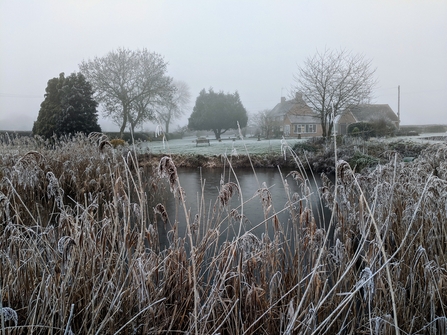It’s been a strange festive period for most of us. Normally I would be away over the Christmas period taking time to unplug in Norfolk but this year meant staying at home. Many people found themselves alone and adrift rather than with their families but I do feel that in Worcestershire we were given a rather lovely gift to brighten our days in the period between Christmas and New Year.
I love snow if I don’t need to go anywhere, so it was a real joy to wake to unexpected snow just before New Year. Living on a farm means that there are many fields to explore and these look particularly beautiful in the snow. Possibly the farmer might not agree as it must make the farm work harder but for the rest of us it’s a delight.
Even more magical than the white fields were the mornings when a hoar frost had settled. Hoar frost is a type of feathery frost that forms when water vapour in the air comes into contact with solid surfaces that are already below freezing point. Ice crystals form and the ice grows as more water vapour is frozen. The word hoar comes from old English and relates to the characteristics of age, such as being white-haired. This is due to the way that hoar frost will sometimes look like ice hair growing on trees and branches.


